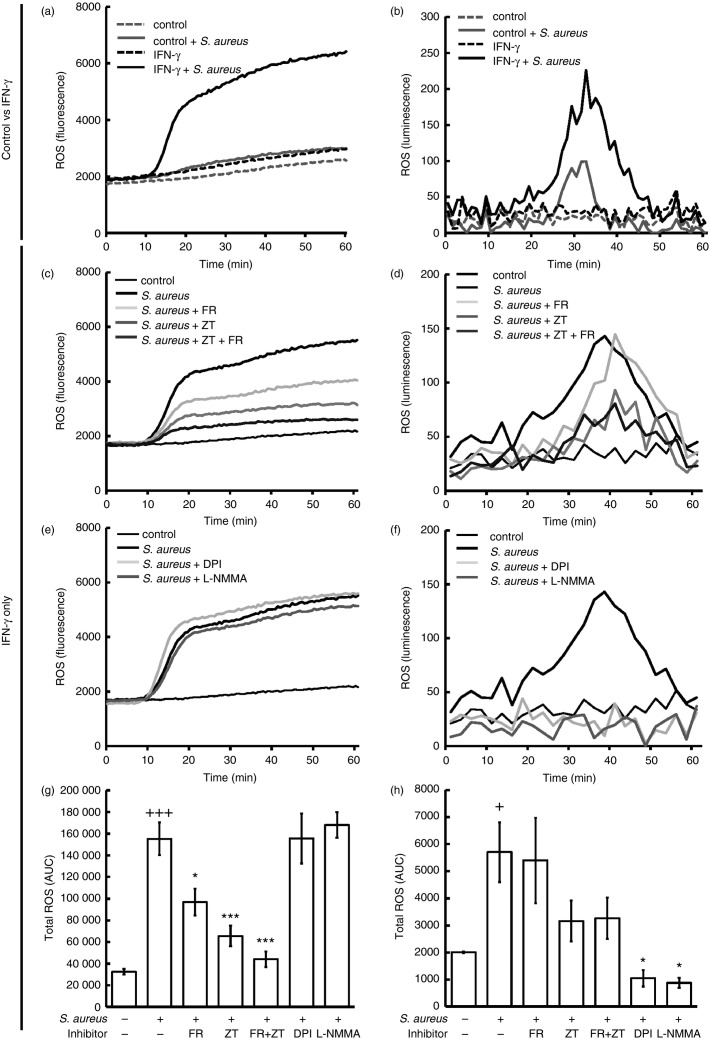Figure 2.
Interferon-γ (IFN-γ) primes human mast cells (huMCs) for enhanced reactive oxygen species (ROS) generation following Staphylococcus aureus exposure. Human MCs were incubated with or without IFN-γ (20 ng/ml) for 48 hr then exposed to dichlorodifluorescein diacetate (DCF-DA; 20 μm) or medium for 20 min. After washing huMCs were incubated in the absence (a, b) or presence of FR122047 (300 nm) (c, d), zileuton (20 μm) (c, d), FR122047 (300 nm) + zileuton (20 μm) (c, d), DPI (5 μm) (e, f) or l-NMMA (100 μm) (e) for 10 min before the addition of S. aureus (20 : 1) or HEPES buffer (negative control). Intracellular ROS production was determined by DCF fluorescence (a, c, e, g) whereas extracellular ROS production was determined by Diogenes chemiluminescence (b, d, f, h) for 1 hr at 30-second intervals at 37°. Area under the curve (AUC) data were calculated for each kinetic curve and averaged (g, h). Results are shown as either kinetic data of single experiments performed in duplicate, n = 4 (a, c, e) or n = 2 (b, d, f) independent experiments from two donors (a–f) or means ± SE for AUC data calculated for each kinetic curve, n = 4 independent experiments from two donors in duplicate (g) or n = 2, two donors in duplicate (h). Results are for huMCs treated with or without IFN-γ (a, b) or IFN-γ only (c–h). AUC data were calculated for inhibitor curves (g, h) and statistical significance was determined by Kruskal–Wallis one-way analysis of variance on ranks with Bonferroni correction for multiple comparisons (+P < 0.05 and +++P ≤ 0·001 for comparison with control cells and *P ≤ 0·05, **P < 0.01 and ***P ≤ 0·001 for comparison with S. aureus-treated cells).

